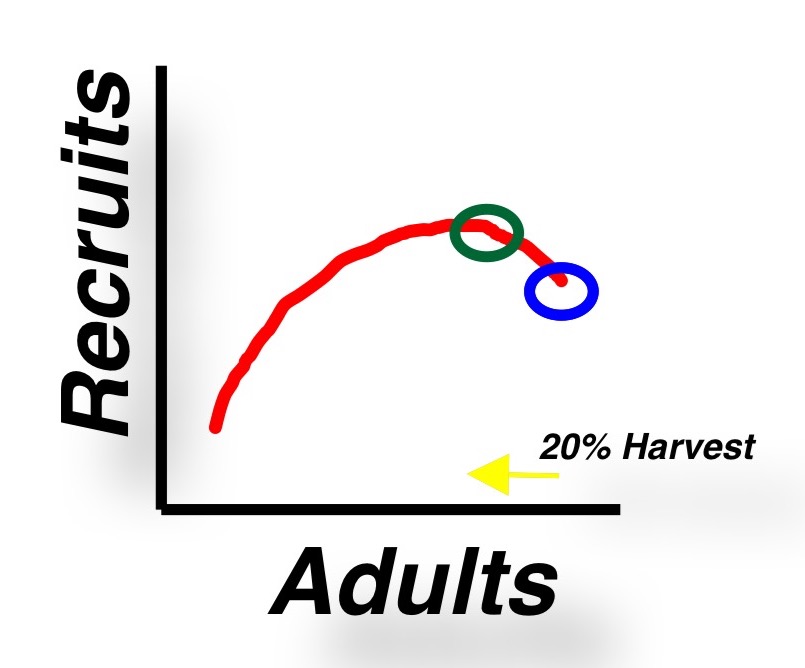The Columbia River Pikeminnow Sport Reward Program just finished another year. A near-record 200,000 adult pikeminnow were harvested and $1.7 million rewards paid. The goal of the program is to harvest 10-20% of the population each year to reduce the population about 50%. Harvest rates in recent years reached as high as 17% as compared to this year’s 11%.
So why after 25 years is the program still harvesting near-record numbers of pikeminnow? The likely reason is that the program is not based on sound science. The Columbia pikeminnow population dynamics likely are best described with a standard Ricker-Type Population Model (see chart below), with reduced recruitment of young at high adult population levels because of competition and cannibalism. The introduction of a light harvest can actual increase recruitment of young by reducing competition and cannibalism, with the increased recruitment replacing the harvest, even providing a constant harvest or yield. This is how fishery quotas may be sustained year after year, such as in Alaska’s Bristol Bay Sockeye salmon fishery.
This same dynamic likely applies to pikeminnow and some other predators in the Central Valley. Pikeminnow are likely near their saturation level in the Central Valley. Any light harvest such as from a sport-reward or removal program would likely have little or no effect. Increasing harvest on non-native predators like largemouth bass by reducing sport-fishing harvest regulations would likely also have a limited benefit. However, striped bass, the most popular sport fish in the Delta, has a population that is already seriously depressed by long-term loss of juveniles to water diversions. Striped bass may respond more directly to increased harvest, further reducing recruitment and further depressing the population.
Thus the species composition of fish that eat other fish could change, satisfying those who vilify stripers and infuriating those who fish for them. But the potential for reduced overall loss of juvenile salmon or other native species that might follow from “predator removal” is far more complex and questionable than its proponents maintain.

Ricker-type stock-recruitment population dynamics model that likely applies to Columbia River and Sacramento River pikeminnow populations
